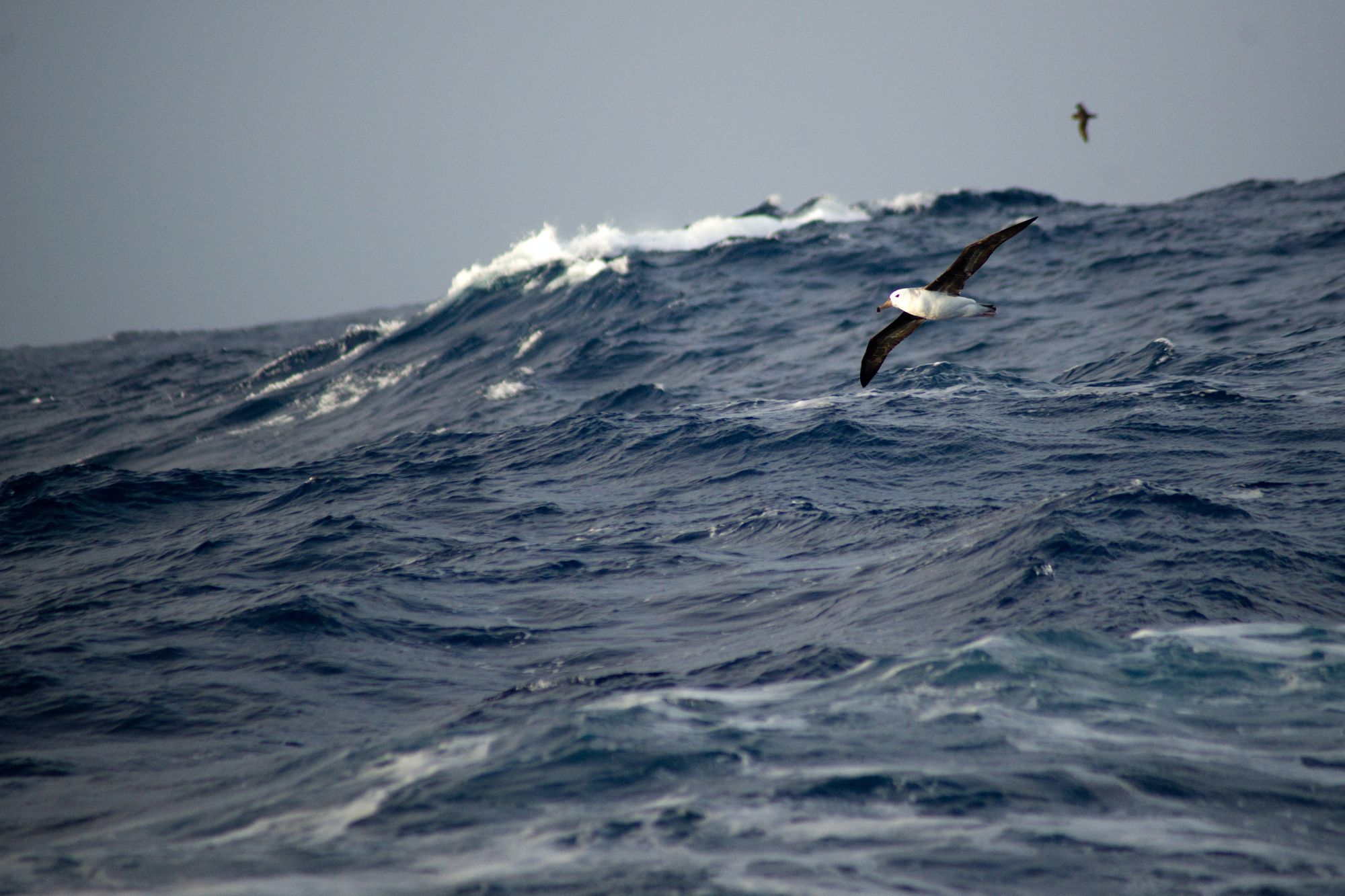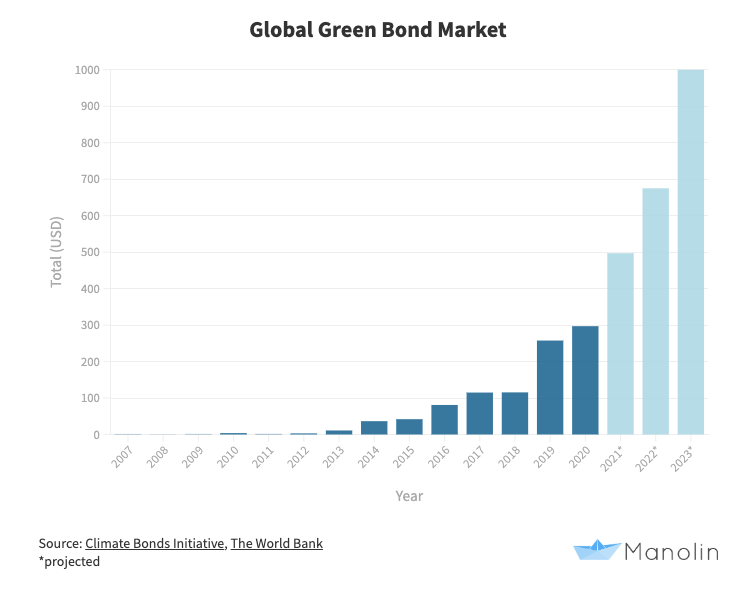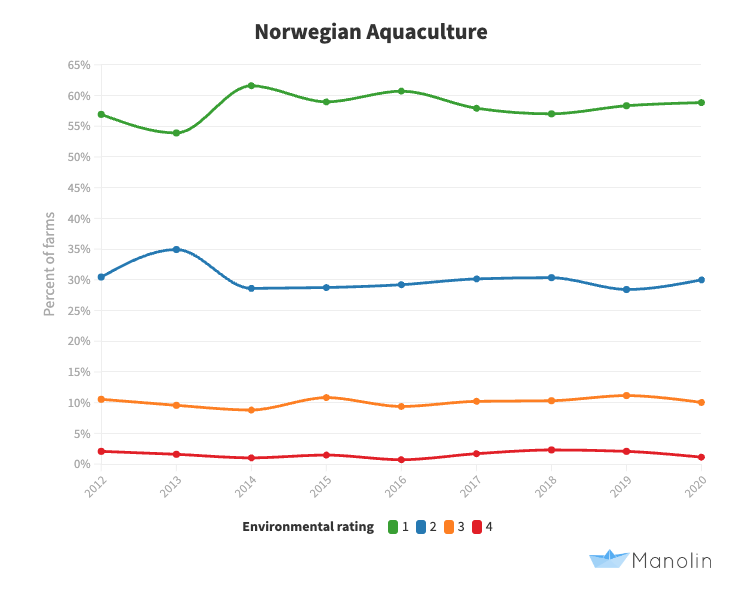The climate impact of investing in farms
Devoting capital to sustainable seafood not only benefits farmers' bottom line—it is potentially a powerful tool in the global effort to tackle climate change.

Last year, we wrote about how green bonds are a win-win for fish health and the aquaculture industry. Since then, the green financing market has only grown. It is projected to more than triple by 2023, according to The Climate Bonds Initiative.

Top salmon companies have secured nearly USD 1 billion in green financing since 2020:
- MOWI: USD 231 million in January 2020
- Grieg: USD 118 million in June 2020 + USD 59 million in November 2020
- SalMar: USD 415 million in April 2021
These companies have developed the first green financing frameworks, setting the precedent in terms of how aquaculture's impact is measured and used to improve best practices.
“The ability of the salmon industry to track and monitor changes over time really allows them to follow through on these promises,” Manolin CEO Tony Chen says during a Global Seafood Alliance panel this month, titled “Green Financing as a Tool for Sustainable Seafood Development."
So far, the metrics of success have included increasing a company's number of ASC certifications and reducing fish escapes, sea lice treatment, and antibiotic use.
But Norwegian seafood is one of the most digitally tracked foods available. Traceability is scaling enormously across farms, so more granular data is already available at an industry-wide level. This can be woven into trends to show where real opportunities are for improvement—and where green financing can make the most impact.
“For the industry as a whole to grow, we really need to target this money towards improvements that help everyone ... Often, the family-owned farms can match or even surpass the framework metrics of the larger companies," Tony says.
Manolin has been benchmarking productions across the industry to identify these trends, including zooming out to find how diseases are moving and evolving, track the industry's environmental impact, and highlight the most efficient farms.

Fish farmers are innovating every day to better farm healthy sources of protein. Gaining more ASC or BAP certifications is win for both companies and the environment, but what about those companies that have already achieved 100% certification?
As green financing becomes more common, issuers have the opportunity to use the available data to expand these frameworks, more accurately measuring how aquaculture farmers are boosting sustainability.
But this also has implications beyond the aquaculture industry itself.
The ocean sits at the center of the climate crisis. It’s absorbing one-third of the human population’s carbon emissions and heating faster than scientists had predicted. Driving more financing towards aquaculture, in particular, can have a significant impact in terms of climate action.
For example, according to each company's own reporting metrics, Apple's US$4,700,000,000 green bond spend avoided 921,000 metric tons of carbon emissions (195 tons per million dollars). MOWI's $230,000,000 green bond—the first-ever issue from a seafood company—avoided 95,354 metric tons (414 tons per million dollars).
That's more than double per-dollar-value in emissions reduction when this money goes to sustainable seafood.
While these are rough calculations and comparisons, they point to an incredible opportunity and growing trend. Norwegian farmers like Eide Fjordbruk are leading the way: the salmon company recently became the first to achieve CarbonNeutral® certification in accordance with The CarbonNeutralProtocol.
More private interests around the world are investing in ocean innovation, in a shift that's redefining how we think about ocean sustainability. In Manolin's recent article for AgFunderNews, BoostVC managing director Adam Draper calls the ocean a $100 trillion market opportunity.
More and more, we're seeing that devoting capital to sustainable seafood not only benefits farmers' bottom line—it is potentially a powerful tool in the global effort to tackle climate change.
It all starts with improving the industry's data management. Farmers are already putting in the work, but they need tools to quantify it and connect to it to finance.
For more data, content, and insights, subscribe to Manolin’s newsletter. Interested in working with us to help fuel aquaculture sustainability? Get in touch here.